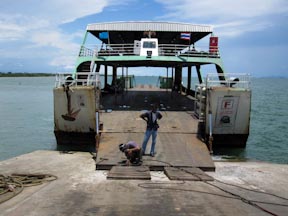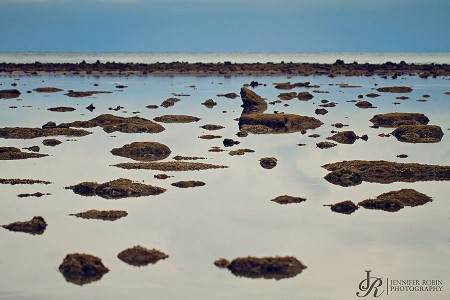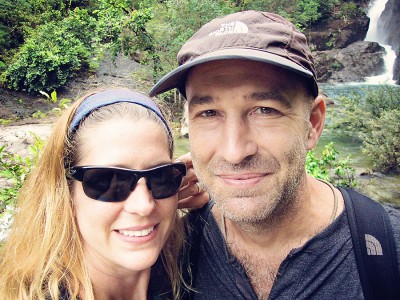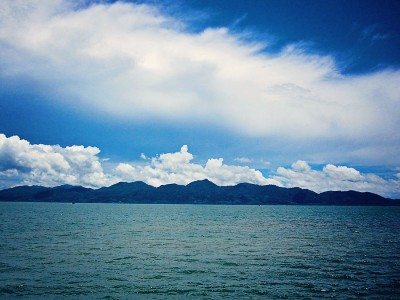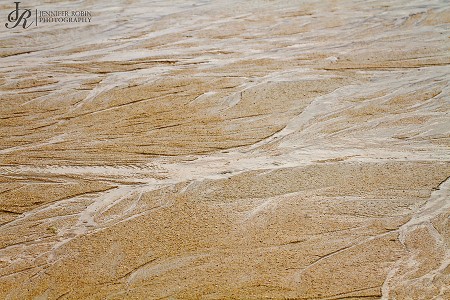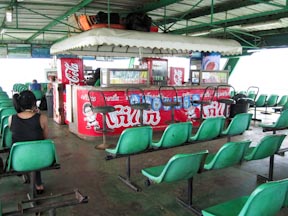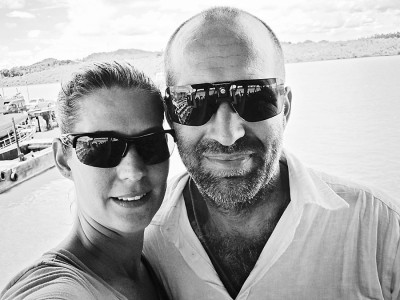Psar Pruhm – Ban Pakard Border Crossing
We used the Psar Pruhm – Ban Pakard border crossing to leave Cambodia and return to Thailand. This is a lesser-used crossing to the southwest of Battambang, Cambodia.
From Battambang, we took a bus to the border, passing through the town of Pailin along the way. The bus stopped a couple kilometers short of the actual border station on the Cambodian side, so we each caught a ride on the back of a motorbike taxi, with the drivers loading our packs between them and the bikes’ handlebars.
On the Cambodian side, we presented our passports and departure cards to an immigration officer in a small building. He did whatever stamping and checking he does – correcting entries we had made if he thought they were not written neatly enough – and handed our passports back. We then walked about a hundred meters to the Thai side of the border. There were no Cambodian exit fees.
On the Thai side, we filled out entry cards, and handed them and our passports over for 15-day visa stamps. As usual for Thailand, there were no fees. But not usual for Thailand, we had to provide passport photos with our entrance cards. At other border stations, an on-the-spot digital photo was taken by the immigration officer while he or she checked our passports and entered us into a computer system. This border station, however, lacked that level of electronic sophistication. Thus the need for paper photos.
With visa stamps in hand, we hired a taxi for the ride to Chanthaburi. The price was fixed at 1200 baht (US $40), which is a hefty sum for an eighty kilometer ride.
Chanthaburi
Our purpose in stopping at Chanthaburi was to break up the trip from Battambang, Cambodia to Ko Chang, Thailand. We arrived in the early evening, and departed the next morning. Consequently, we saw little of the town, save for an ATM and our hotel room.
The hotel we used was the Kasemsarn (click here).
From Chanthaburi, we took a bus to Trat; and from the Trat bus station, we took a sawngtheaw to Laem Ngop for the ferry ride to Ko Chang. The sawngtheaw ride was a bit of a racket – rent the whole truck for a ride now at the expensive price of 300 baht to cover twenty kilometers, or wait an indeterminate amount of time until the truck fills with passengers at the rate of 70 baht per person. We ended up leaving with one more passenger at the price of 100 baht each.
For the channel crossing, we took the ferry from Centrepoint Pier at Laem Ngop. Round trip ferry tickets cost us 120 baht each, and the ride across the channel took a little over an hour. Once at Ko Chang’s ferry landing at Tha Dan Kao, we were at the mercy of over-priced taxi drivers to get to other parts of the island.
Our general impression of Ko Chang: It is an example of what happens when excessive tourism invades an otherwise nice place: it gets ruined.
The island is littered with hotels, guesthouses, restaurants, clothing stores, souvenir stores, and dive shops; all catering to Western tourists. We could have been in any beachfront tourist town, anywhere in the world, and seen the same thing.
And, like any other coastal tourist destination, everything on Ko Chang is over-priced. The taxi drivers have agreed upon an outrageous rate schedule (100 baht to go a distance that demands 20 baht anywhere else). Both the taxis and the hotels demand advance payment. The meals run about 50% more than the mainland. Room rates, even in the off-season, are about double mainland rates for comparable accommodations.
Western tourists are walking ATMs, and the locals are well-practiced at making withdrawals.
And there are tons of Westerners from which to draw. Even in this, the off-season, pale skin was everywhere. Unfortunately, there was more pale skin to see than there should have been, as shirtless young men sped around on motorbikes, reminiscent of other tourist-trashed places, like Vang Vieng in Laos.
We used a motorbike to transit the western half of the island, eating at a few places and checking out some of the sights (of which there aren’t many, other than a few waterfalls). It was all under-impressive, particularly after spending almost four months in less-commercial places in SE Asia.
And the beaches…OK, maybe we’ve been spoiled by living in Southern California and Hawaii, but Ko Chang beaches aren’t much to write home about. The water’s warm, but the sand is still sand, the landscape is not on par with Hawaii or Thailand’s Krabi coast, and the water clarity is poor.
So, if you are looking to spend some time hanging out on a beach with other Westerners, pay excessive bar tabs, shop for over-priced souvenirs, and have the ability to tell the folks back home that you went to Thailand, without having to actually go to Thailand…well, then Ko Chang is your kinda place. Of course, you could do all that closer to home and save the plane ticket – you’d just have to tell a slightly bigger lie about having gone to Thailand.
For accommodations, we spent the first night at the Bailan Beach Resort (click here); but lack of privacy prompted us to move to the Chivapuri Resort (click here).
For food, we ate at the hotels and at various restaurants around the island. All of them were overpriced by mainland Thai prices, and none of them were exceptional. You could probably eat anywhere and get about the same thing. A lunch or dinner for two, with rice and two dishes and a couple beers, ran about 450 baht (US $15) everywhere we went.
